Volt Birth Watch 61: WSJ Disses GM's Hail Mary
The Wall Street Journal's Holman Jenkins joins the growing media chorus asking "WTF's up with GM?" [paraphrasing]. With GM's stock prices in the $11 per share range for the first time since the 1950s, Jenkins wonders if banking the entire company's future on one model– the plug-in electric gas hybrid Volt– is "nuts." In the grand TTAC style, the scribe observes "to pour hundreds of millions into a race to launch an electric car, the Chevy Volt, guaranteed to lose money on every unit sold, begins to seem a peculiar strategy for a company in dire liquidity straits." Jenkins covers all bases in his Volt diss. "For those who think the Volt's justification is greenhouse emissions, notice that electric cars play Three Card Monte with energy inputs: It all depends on where the electricity is coming from." To drive home his point, he reminds us "Rick Wagoner last week laid out the case to Barack Obama personally for turning GM into a ward of the state," and "that a big part of the company's turnaround gamble consists also of eliciting favor once again from Washington after a period in which the domestic auto makers were nothing but whipping boys on Capitol Hill." In fact, Jenkins only misses the target once: his repeated insistence that "GM executives are not nuts." In that sense, neither are pistachios.
More by Frank Williams






















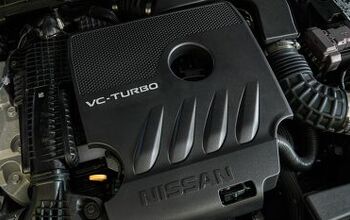

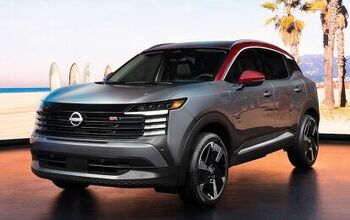
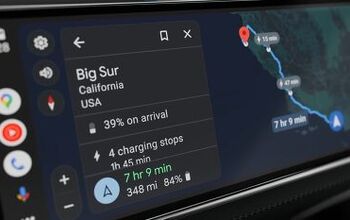

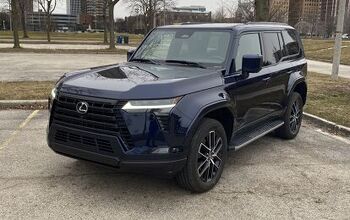
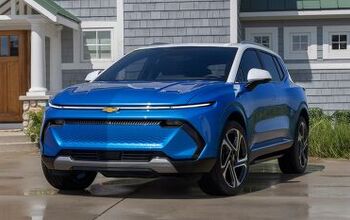
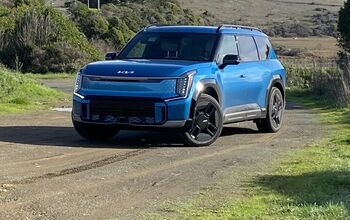




Comments
Join the conversation
I think the problem here is not that the project itself is not feasible technically, but the intense competition it will face when it is launched. Toyota will have a plug in hybrid by 2009, the model is already fully designed and likely in production as I type this. The volt is still in drivetrain testing with mules. By the time the volt is released it will have to compete with a large number of hybrids, plug-in or otherwise. Given the choice between a cheap, proven tech like the Prius and the expensive(40k!) unproven volt, consumers are unlikely to choose the latter. But it gets worse, even if the volt is successful, it would be a simple matter for Toyota or Honda to create something similar. Both companies already have tech which would be fairly simple to convert to serial hybrid configurations. The Fcx clarity Honda is leasing out is basically a volt with a fuel cell instead of an ICE. If it turns out that ICEs are the way to go, I have no doubt they could crank out something within a few years. In the meantime, the existing hybrids would still be eating the Volt's lunch.
Personally I think the fact that the Volt is a Series Hybrid, consequently allowing GM to change the power supply from ICE to whatever in the future, is the key weapon over the Prius. Each component, elec motors, batteries, ICE or alternative can be updated withour requiring changes to the other parts. I wonder if GM will allow upgrading to existing Volts in 2011-2012 in the manner of Volt 1.0 upgrading to Batts/Elecs/ICE of Volt 1.1, 1.2 etc. Cheers Matthew
Phil Ressler: "That’s a seriously dysfunctional town council you have there." Oh, yes... Phil Ressler: [Volt is seriously compromised.] "How?" The battery, drivetrain and size constraints necessary to the energy budget are squeezing everything. The Volt is going to have very little trunk space and room only for 4; there will be no middle place in the rear seat. If I understand the bodystyle correctly, it will be a coupe, which says no one's putting baby seats in it. In spite of its 4-seat limit, it will still be relatively wide. GM is talking about a fuel tank of 6 or 7 gallons, which they want us to think leads to an effective cruising range of 300 miles. In fact, this is not the case. The Volt will do, without recharge, no more than 240 miles comfortably, if it gets the 7 gallon tank, and 200 if it doesn't. No one cruises until the tank is dry... when you have 100 miles range remaining, you start to think about a gas station. There's lots of places you can be driving in the US where having less than 100 miles left causes you some concern. We take an annual trip to the East Coast, 1300+ miles. If we take the Rav4, I refuel every 300-380 miles or when we stop for the night. If driving the minivan, I refuel every 400-450 miles or when we stop for the night. If range wasn't important, no manufacturer would mention it in their ads. But they do. In spite of the Volt's allegedly impressive fuel economy, compared to my minivan, it will want refuelling twice as often. Any gas-electric car is, necessarily, a bag of compromises. The Prius is a successful one because they picked the compromises that work for people. The Volt is not going to do that. With the exception of a very noisy minority, few people are dying to get off gas at any price. The Volt is for them. And them alone. Phil Ressler: "But a plain-vanilla EV would not suffice as a sole or primary vehicle for most people." So? What family owns just one car? Nobody in my neighborhood. We've got three. At times, we've had five. At no time were ALL of them twenty-five miles or more away from the house. The Volt is going to have limited appeal, why should other vehicles with limited appeal be dismissed out of hand? Especially when they're likely to be more cost-effective for their primary mission? Phil Ressler: "Re-imagining the car for upcoming market realities is exactly what a GM that believes it has a future should be doing." Revectoring imaginary cars that will turn a profit in 6 or 7 years, if things go well, is something that profitable companies can do. GM can't afford it. And if GM was any good at forecasting "upcoming market realities," then they wouldn't be in the pickle they're in, would they? Phil Ressler: "Right, GM is not a pioneer in what you call “gas-electric” automotive technology as you define it because your imagination is limited by “Hybrid Synergy Drive.” " The idea of a serial hybrid occurred to me long before I heard Lutz babbling about the Volt. As for the limits of my imagination, that's unimportant compared to the limits that we term "physics" or "the state of the art in materials science." The Chrysler minivan broke the mold (or, perhaps, discovered a little-used mold originally owned by VW and fixed it up for market acceptance). A vehicle company can imagine new uses for a vehicle and new formats (within limits) for a vehicle and have a good chance of realizing them but they can not imagine a new powertrain into existence the same way. Phil Ressler: "GM can make money on more prosaic vehicles." They can? Then why aren't they? Phil continues, ignoring my obnoxious interruption: "That they haven’t lately does not preclude fixing their conventional car business so they can." It's a matter of finite choices. GM is running out of money. As a business, are they doing what's appropriate to stay in business so that they can someday realize The Dream? No. For some reason, they would rather do an Institutional Moonshot, rather than take the steps necessary to fix their current product. They don't have the resources to do it all. Phil continues: "Like Toyota and Honda before them, they can subsidize new technology introductions through a combination of conventional sales and government incentives to consumers." Ahhh... we get down to cases... A different flavor of the Government Bailout to save a Valued Element of the National Economy. Well, it's true that the Prius enjoyed some government largesse (Toyota denies receiving funding from the Japanese government... which makes some sense because they don't share the resulting tech with Honda). Tax credits, to some extent, kick-started the market for hybrids. But that was years ago. The market for hybrids is established. Several companies took advantage of it. GM chose to let the opportunity go by. Where's the societal impetus to do it again? What happened to all the Precept money? What are my other choices? I can think of plenty of things to do with government money that make much more sense than supporting GM so that they can bring a vehicle of questionable utility to market in an completely untimely fashion. Phil Ressler: "The Volt project is exactly what I’ve described. It is the bridge to Hy-Wire or a platform inspired by the AUTOnomy idea, which yields a car dramatically different from what we think of as an automobile now. Even if GM’s own exec team seems unable to articulate this, the lineage connecting EV1 to Volt to Hy-Wire is as obvious to an outsider paying attention as Mercury and Gemini were to Apollo." This comment, the lineage of the EV1 to the Volt and on... brings me back to something else... what makes anyone think GM can actually build a Volt? Let's look at GM's record: The BAS system is a flop. The two-mode hybrid is a flop. The Volt concept went into the wind tunnel in the late fall of 2007, 9 or so months after GM had started showing it off at auto shows and committed to it and GM had to re-learn a lesson from the EV-1: aerodynamics is critical. And the Volt concept aerodyamics apparently sucked rocks. Did it occur to GM to ask, "Why does the Prius look the way it does?" Or "Where are the files from EV-1?" Or "Can anybody find the Precept files?" The perfectly conventional Camaro is late. GM is still talking about supply issues for the Malibu and the Enclave. They're going to do the world's most allegedly advanced vehicle and not lose their shirts? They've allegedly got EV-1 and Precept experience, yet they're relearning lessons from those programs? It was reported, elsewhere, "We can get anything we want." That's a really bad way to run a project. God help anyone that tells me I can have whatever I want to do a project. It will be beautiful (because I'm extremely good at what I do) but it will cost a fortune. And it will be late. There was an article - a great article - in Atlantic Monthly, recently, about the Volt project. It was blogged on TTAC. [paraphrasing...] At the beginning, the author happens to relate that, due to various schedule slips, underbody testing time will be squeezed to the minimum allowable. Towards the end of the article, the chief engineer, Farah, is lamenting something that's not going right. "Well," the author remarks, "at least as one of your top execs said, you're building on a well-tested platform, so no worries there?" Farah shoots him a look... "There's a giant hole in that 'well-tested' platform where this battery goes."